13 Evergreen Plants That Add Structure to Autumn Gardens
As the days grow shorter and the leaves begin to fall, your garden can still thrive with a touch of evergreen beauty. These plants add structure, giving your garden a grounded feel even as other plants rest. Whether you are looking for bold foliage or delicate needles, evergreens provide a variety of textures that enrich your landscape. Their ability to maintain their form throughout the season makes them a reliable choice for garden enthusiasts.
This post may contain affiliate links, which helps keep this content free. Please read our disclosure for more info.
Boxwood (Buxus sempervirens)
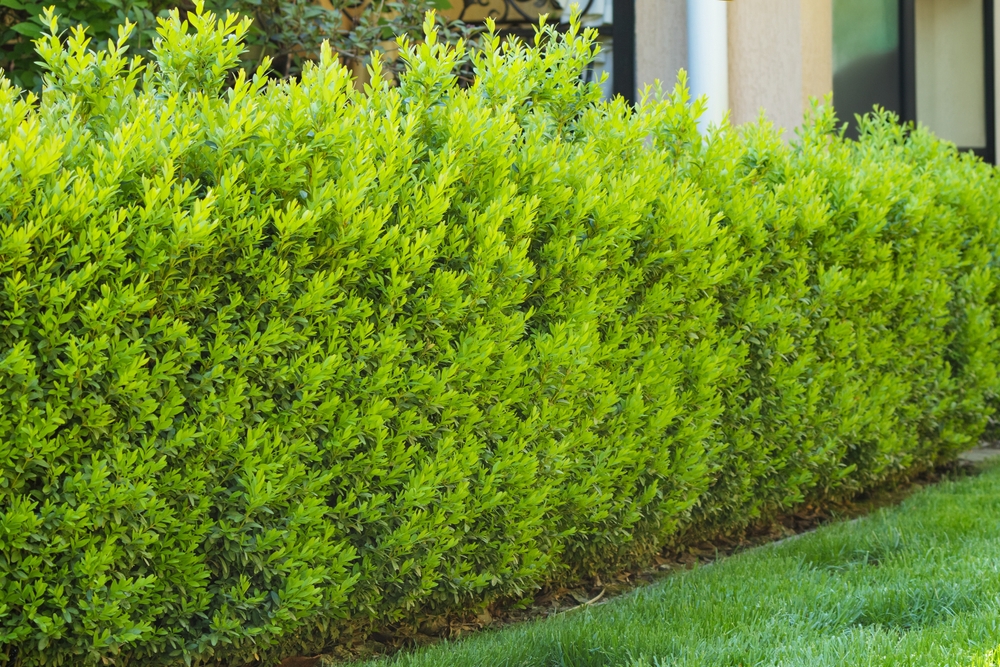
Boxwood is a versatile evergreen that is perfect for adding structure to any garden. With its dense, rich foliage, it is often used as a low hedge, topiary, or border plant. Boxwoods can be easily pruned to maintain a neat and formal appearance, making them an ideal choice for creating defined garden spaces. They thrive in both full sun and partial shade, and their compact size allows them to fit in smaller areas.
These plants are highly adaptable to a range of soil types, as long as the soil is well-drained. Boxwoods are also relatively low-maintenance, making them a great choice for gardeners who want a plant that looks good without constant attention. As the weather cools in autumn, boxwoods continue to hold their vibrant green color, providing a refreshing contrast against the browning foliage of deciduous plants. Their evergreen nature ensures that they provide year-round structure.
Holly (Ilex aquifolium)
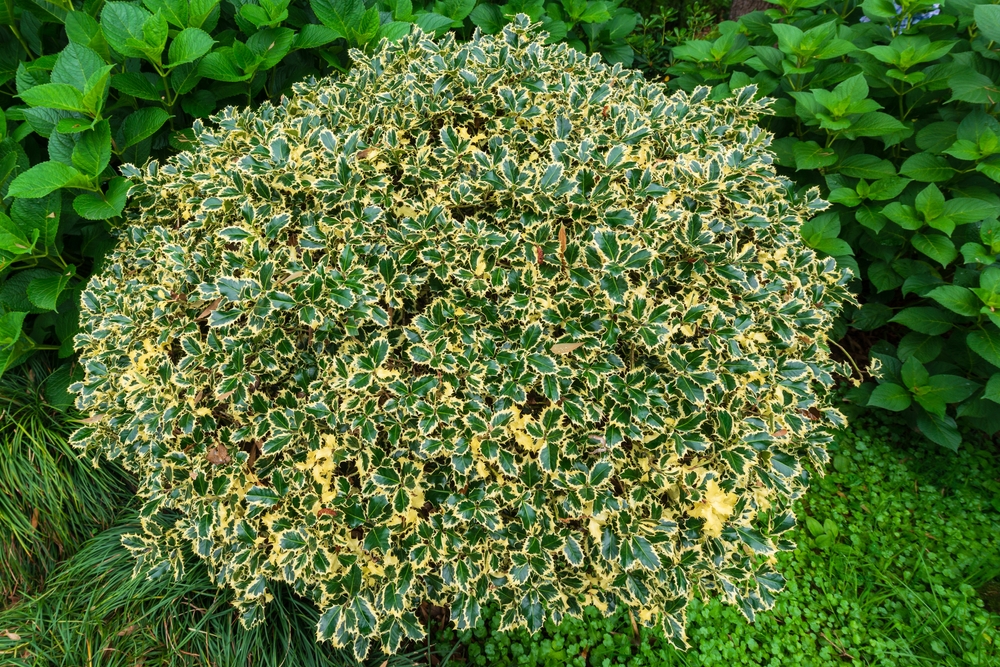
Holly is a well-known evergreen that brings both color and structure to autumn gardens. With its glossy, spiny leaves and bright red berries, holly creates a striking focal point in any landscape. It thrives in both full sun and partial shade, making it an adaptable addition to gardens of various sizes. Holly is commonly used as a hedge or specimen plant, adding a bold, sculptural element to garden spaces.
Besides its aesthetic appeal, holly is also a practical choice for autumn gardens. The plant’s berries provide food for birds during the colder months, helping to attract wildlife to the garden. Holly’s dense foliage forms an excellent natural barrier, offering both privacy and protection from the wind. Even in the autumn months when many plants lose their color, holly retains its vivid green leaves, adding a sense of permanence and structure.
Yew (Taxus baccata)
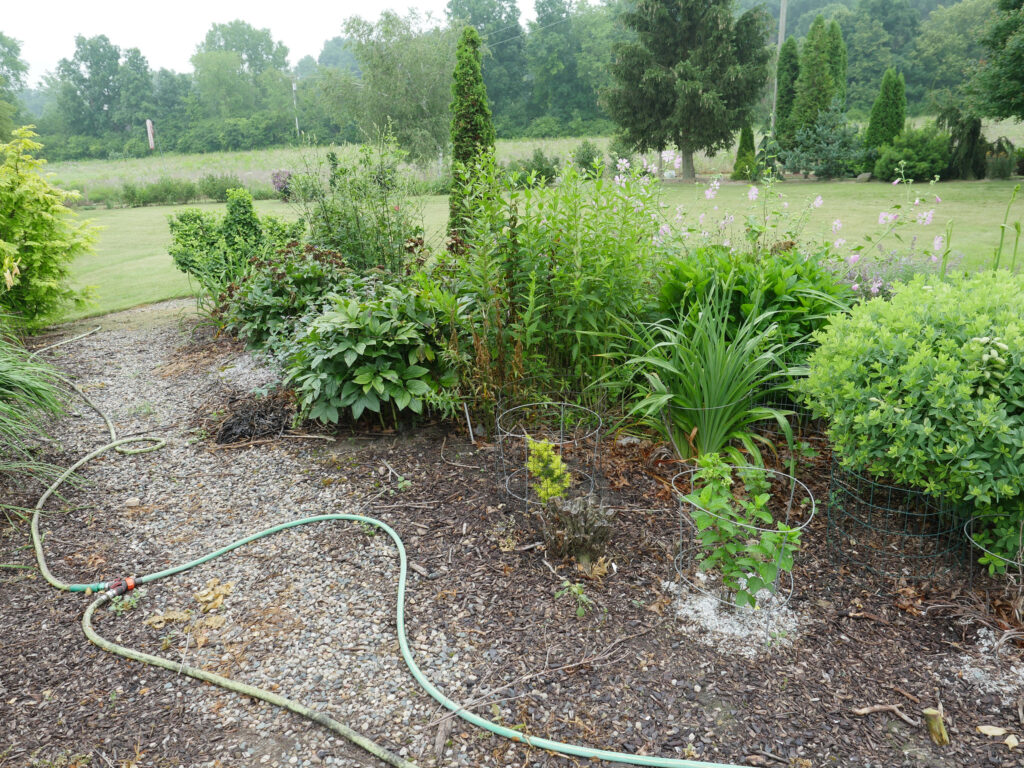
Yew is a classic evergreen plant that is known for its soft, needle-like foliage and excellent versatility. It can be shaped into hedges, topiaries, or even used as a specimen plant in the garden. Yews are slow-growing, which makes them ideal for gardeners who want long-lasting, low-maintenance plants. They are also known for their ability to tolerate a wide range of soil conditions, from acidic to alkaline soils.
One of the yew’s most notable features is its ability to maintain its rich green color throughout the year. In autumn, when other plants begin to fade, yews provide a reliable backdrop with their dark green foliage. These plants are drought-tolerant once established, making them perfect for gardens in areas with less rainfall. With their elegant appearance and hardy nature, yews are ideal for adding structure to autumn gardens while requiring minimal care.
Juniper (Juniperus communis)
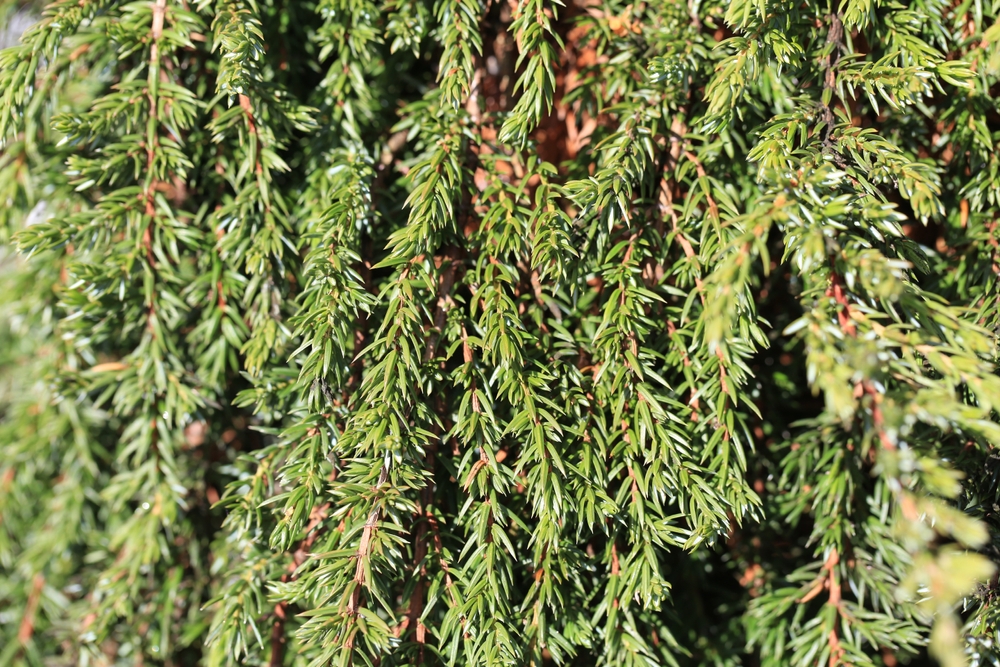
Juniper is an evergreen plant that offers a unique texture and form to autumn gardens. It is available in a wide range of sizes and shapes, from low-spreading ground covers to tall, upright shrubs. The needle-like foliage of juniper ranges from green to bluish-green, providing a soft, colorful backdrop in autumn. Junipers are especially effective at adding structure to garden borders or used as a focal point in rock gardens.
This plant thrives in well-drained soils and is known for its drought tolerance once established. Junipers are also resistant to many pests and diseases, making them a low-maintenance choice for gardeners. Their compact size and dense growth help to define garden areas, while their needles maintain a striking appearance throughout the colder months. Junipers are an excellent choice for creating a more natural, rustic feel in the garden while adding evergreen structure.
Rhododendron (Rhododendron spp.)
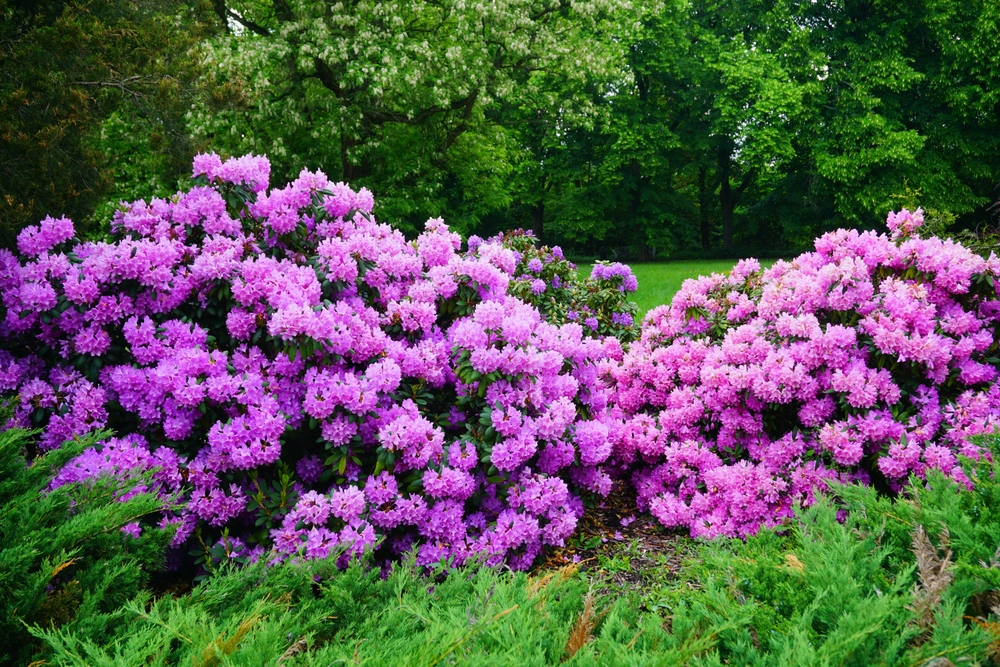
Rhododendrons are a beautiful evergreen that adds both color and structure to autumn gardens. Known for their large, leathery leaves and vibrant blooms, rhododendrons provide a bold presence in the landscape. They grow best in well-drained, acidic soils and are particularly suited to shaded or partially shaded areas. During autumn, their dense, glossy foliage adds texture and contrast, even when the flowers are no longer in bloom.
Rhododendrons are also well-known for their ability to tolerate cold temperatures, making them ideal for autumn and winter gardens. Their thick leaves hold onto moisture, helping to maintain a healthy, lush appearance even during dry spells. These plants are relatively low-maintenance and can be pruned to shape. With their thick, hardy foliage, rhododendrons create a solid structure in any garden, offering a year-round presence.
Korean Spice Viburnum (Viburnum carlesii)
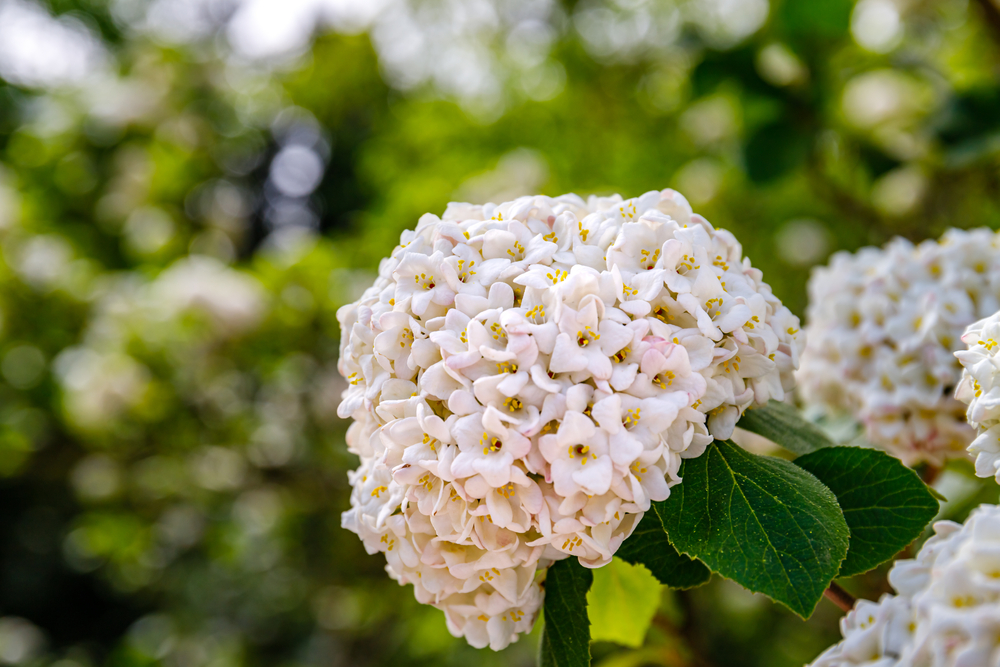
Korean Spice Viburnum is an evergreen shrub that adds both visual appeal and structure to the autumn garden. It is known for its fragrant flowers in spring, but its dense foliage and compact growth provide year-round interest. The plant’s dark green leaves turn to a rich red in the autumn, creating a vibrant contrast with the rest of the garden. It can be grown as a shrub or shaped into a small tree, providing both height and volume in garden beds.
This viburnum thrives in well-drained, slightly acidic soils and can tolerate both sun and partial shade. Once established, it requires little care and is resistant to many common pests and diseases. The Korean Spice Viburnum’s dense growth provides a solid backdrop for other plants in the garden. Its colorful autumn foliage and sturdy structure make it a valuable addition to gardens that need a reliable evergreen plant to carry through the colder months.
Chinese Evergreen (Aglaonema)
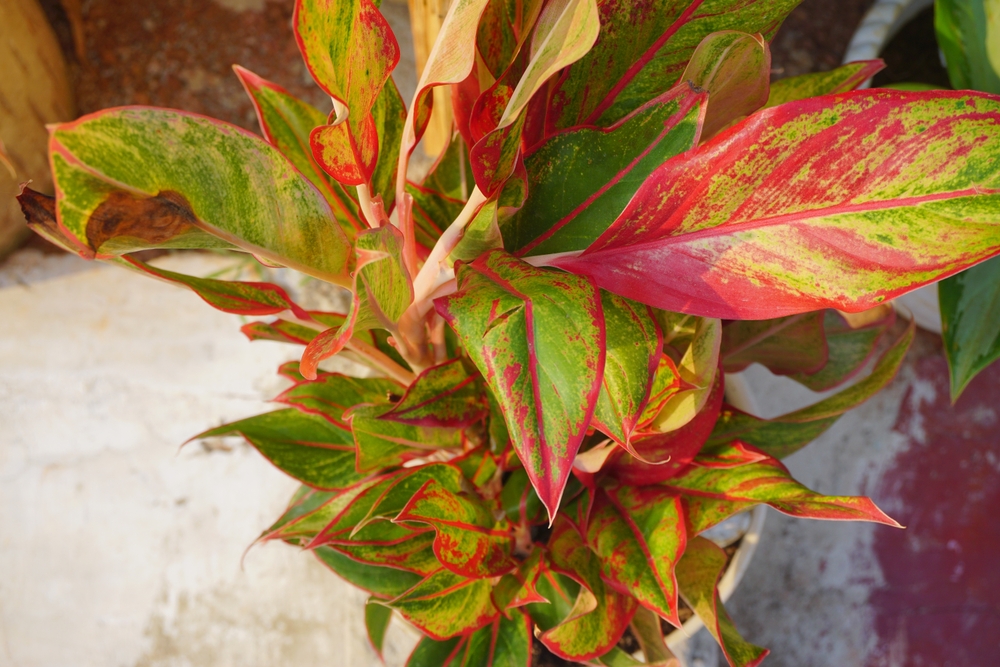
Chinese Evergreen is a popular evergreen that thrives in indoor and outdoor autumn gardens. Known for its striking foliage, this plant features deep green leaves with silver or white markings. It thrives in shaded or partially shaded areas, making it ideal for garden corners or as a border plant. Chinese Evergreen is well-suited to low-maintenance gardens, as it requires minimal care and can tolerate a range of light conditions.
This plant is also highly adaptable to different soil types, as long as they are well-drained. During autumn, the Chinese Evergreen’s dark green foliage provides a sense of depth and structure to the garden. Its ability to thrive in low light means it can be a valuable plant for areas that may not receive full sun. Chinese Evergreen is perfect for gardeners looking for a durable, attractive plant that requires little attention but still delivers year-round visual interest.
Abelia (Abelia x grandiflora)
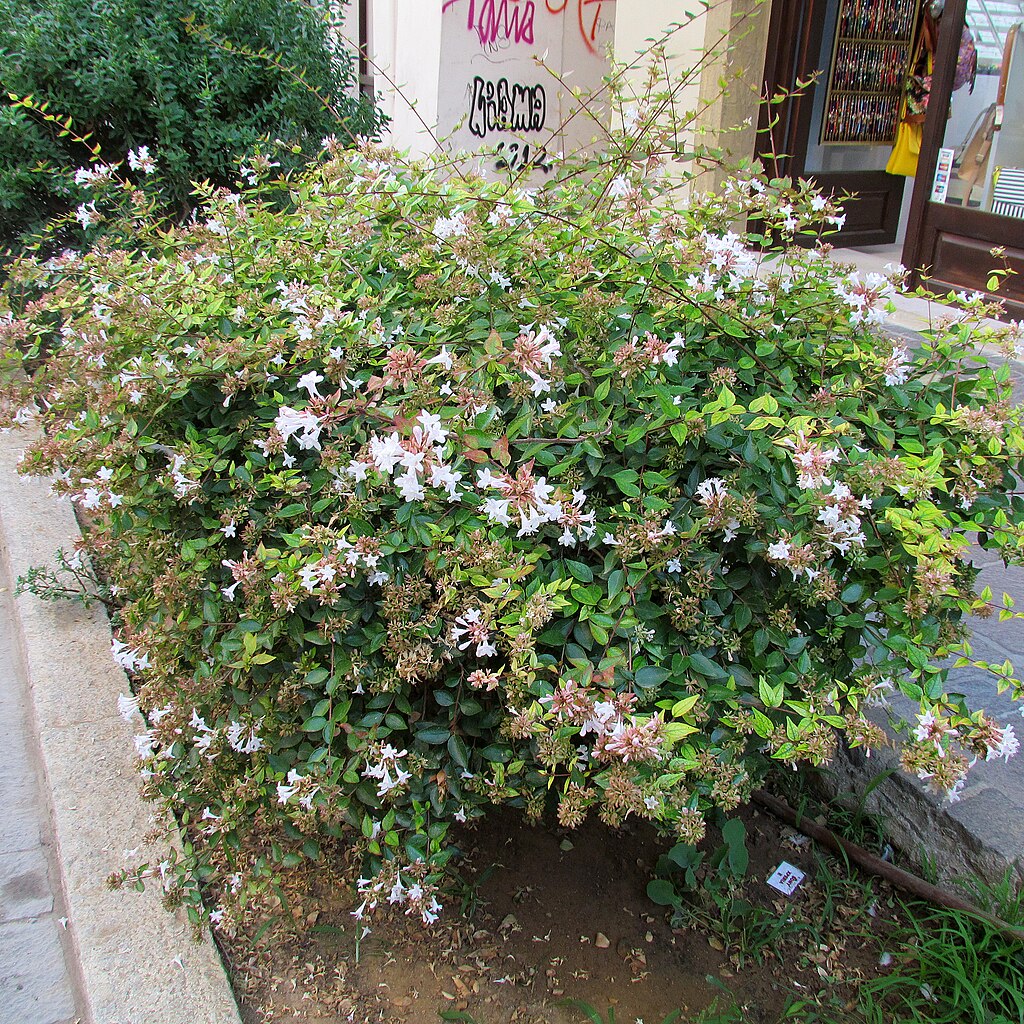
Abelia is an evergreen shrub that offers structure and color to autumn gardens. It is known for its graceful arching branches and glossy green leaves that take on a rich, reddish tint as the weather cools. In addition to its vibrant foliage, abelia produces small, fragrant flowers that attract pollinators. These plants are perfect for creating a natural, flowing look while providing a sturdy foundation in the garden.
Abelia thrives in well-drained, slightly acidic soil and prefers full sun to partial shade. This shrub is relatively low-maintenance, requiring only occasional pruning to maintain its shape. Its ability to retain color throughout the seasons makes it a dependable addition to the autumn garden. Abelia’s dense growth habit adds structure and texture, making it a fantastic choice for garden borders or mixed plantings.
Laurel (Prunus laurocerasus)
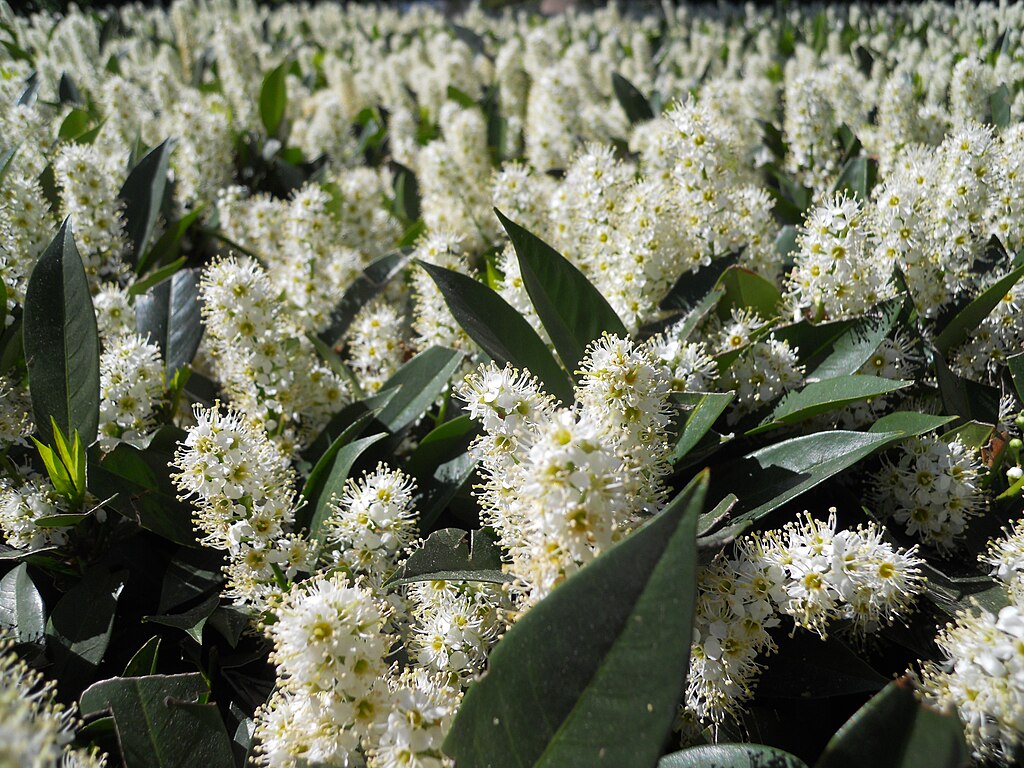
Laurel is a fast-growing evergreen that offers both structure and privacy to autumn gardens. With its broad, leathery leaves and dense growth, laurel can be used to form tall hedges or screens. Its deep green foliage provides a solid, consistent backdrop throughout the year, even as other plants lose their leaves. Laurel thrives in full sun or partial shade, making it a versatile addition to a variety of garden spaces.
Laurel is also known for its ability to tolerate a wide range of soil conditions, from clay to sandy soils. Once established, this evergreen requires minimal care and is resistant to pests and diseases. Laurel’s compact, dense form allows it to serve as a natural privacy screen, offering both structure and protection. It is especially useful in larger gardens where a tall, evergreen hedge is needed.
Needlepoint Holly (Ilex crenata)
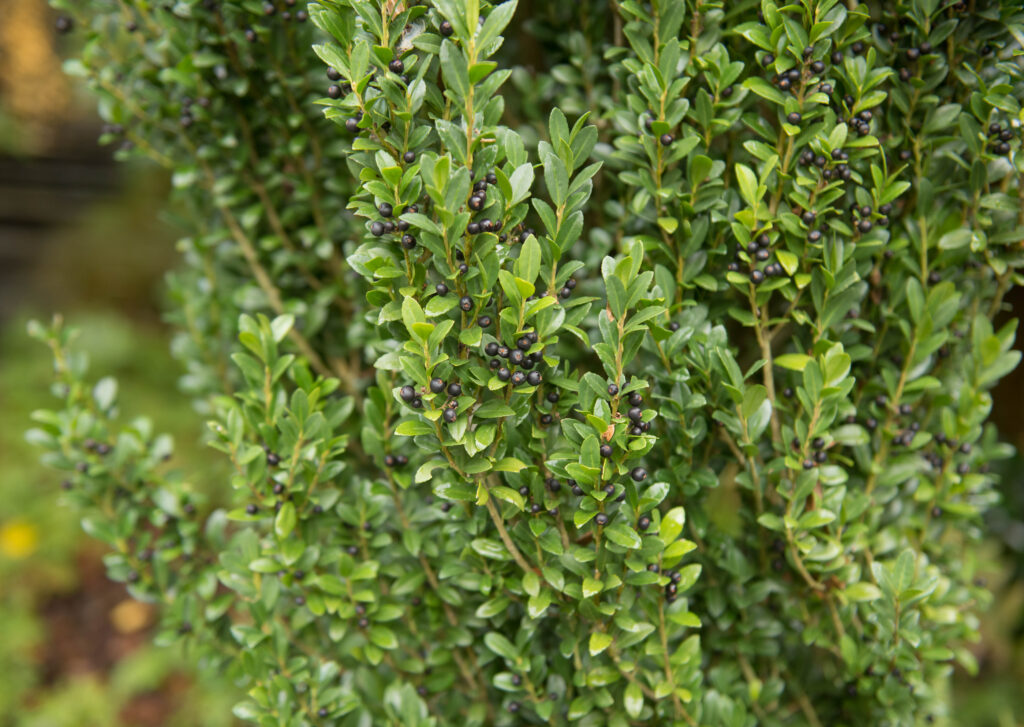
Needlepoint Holly is a smaller, more compact variety of holly that is perfect for adding structure to autumn gardens. With its narrow, spiky leaves and dense growth, this plant forms a perfect hedge or border. Its rich green color contrasts beautifully against the browning foliage of deciduous plants in the fall. Needlepoint Holly is especially suited for smaller gardens, where its tidy, upright growth helps create defined garden areas.
This plant thrives in well-drained soils and can tolerate both sun and partial shade. It is low-maintenance once established and does not require much pruning, making it an ideal choice for busy gardeners. Needlepoint Holly’s small size makes it versatile, and it works well in both formal and informal garden designs. Its ability to maintain its color throughout the year ensures that it provides lasting structure, even in the cooler months.
Mahonia (Mahonia spp.)
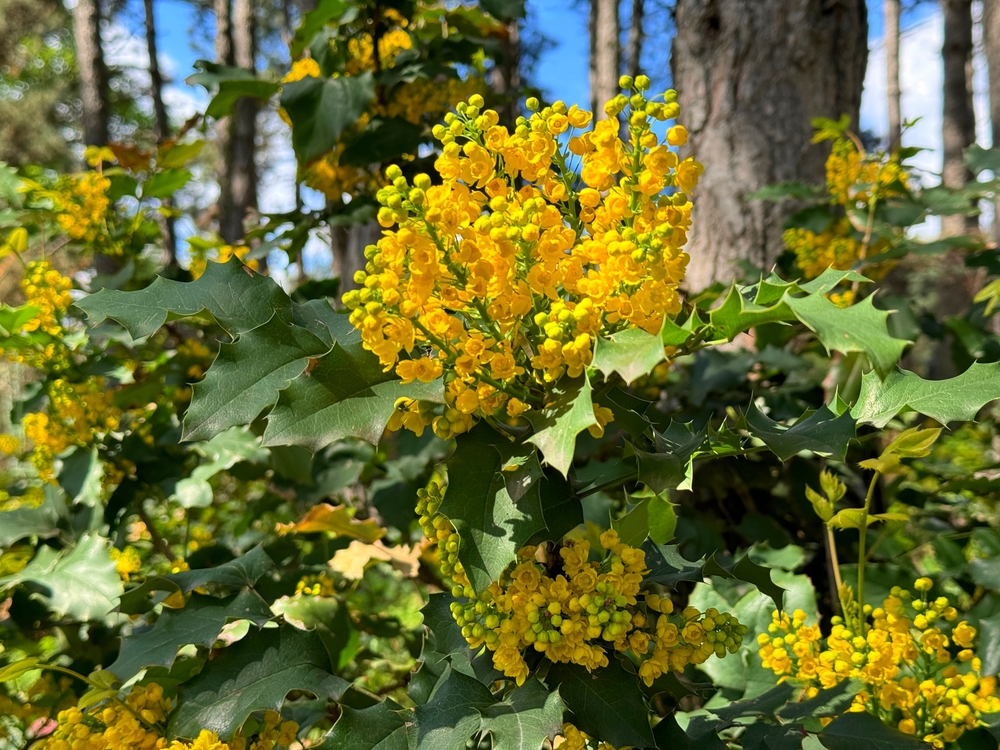
Mahonia is a striking evergreen plant that stands out in autumn gardens with its bold foliage and vibrant yellow flowers. The plant’s spiny, holly-like leaves transition from deep green to purple-red hues as the weather cools. Mahonias also produce fragrant, yellow blooms in late winter, offering additional seasonal interest. Their dense, spiny growth provides a rugged yet attractive structure in garden beds or along pathways.
Mahonia prefers well-drained, slightly acidic soils and thrives in both sun and partial shade. This evergreen plant is low-maintenance, requiring minimal pruning to keep its compact form. Mahonias are particularly valued for their ability to provide structure during the winter months, as they maintain their color and texture when other plants are dormant. Their striking appearance and ability to attract pollinators make them a great addition to any autumn garden.
Pieris (Pieris japonica)
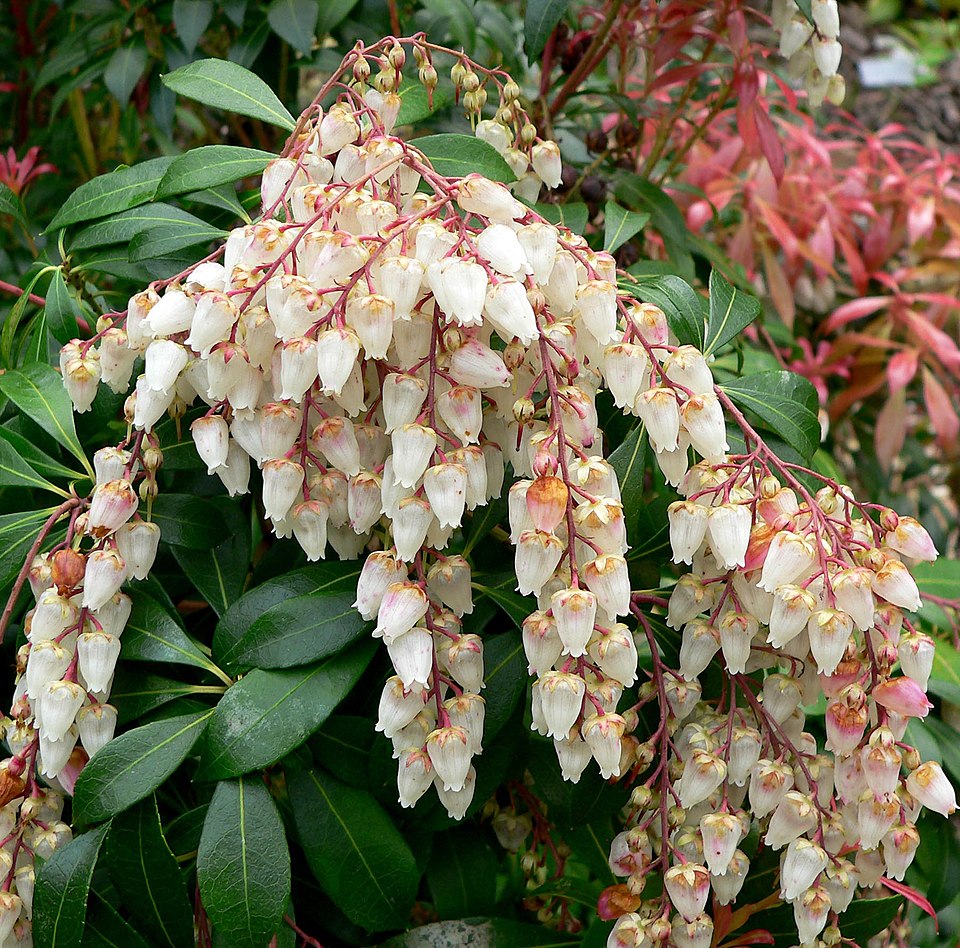
Pieris, also known as Japanese Andromeda, is an evergreen shrub that adds both texture and color to the autumn garden. With its glossy, leathery leaves and delicate flower clusters, pieris creates an elegant structure in the landscape. The new growth is often tinged with red, adding a pop of color to the garden as the season changes. Pieris thrives in acidic, well-drained soils and can tolerate partial to full shade.
This plant is particularly prized for its ability to maintain its color throughout the cooler months. Pieris also produces small, urn-shaped flowers that bloom in early spring, attracting pollinators and adding seasonal interest. It can be used as a specimen plant or in groupings to create depth and dimension in the garden. Pieris adds year-round structure with its tidy, compact growth habit and vibrant foliage.
Heather (Calluna vulgaris)
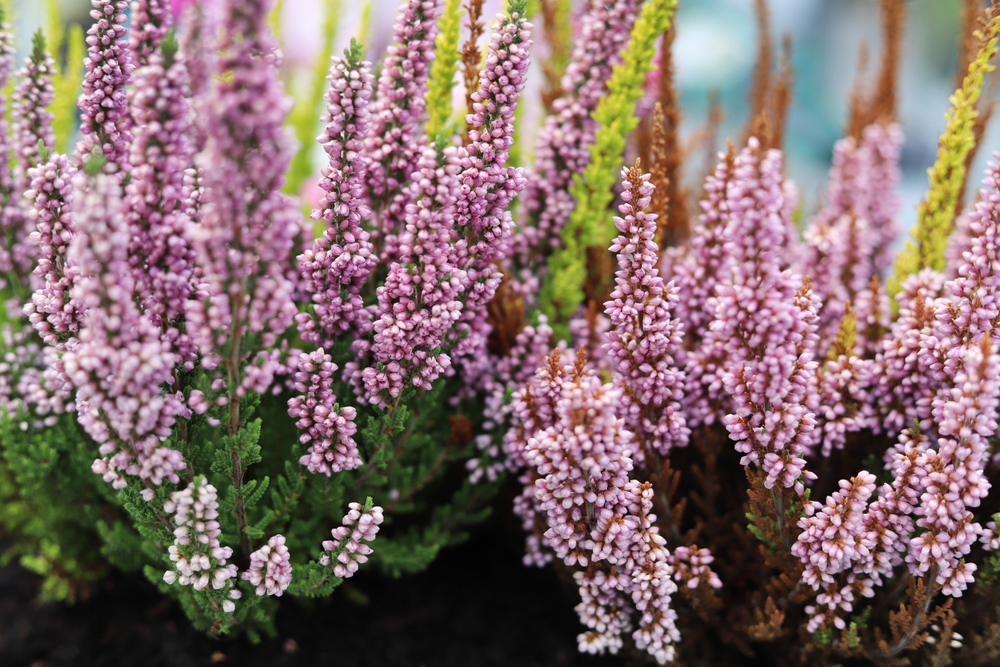
Heather is a low-growing evergreen plant that adds both ground cover and structure to autumn gardens. Known for its vibrant flowers and leathery, needle-like leaves, heather creates a colorful carpet in garden beds. While its blooms are most prominent in late summer and fall, its dense growth continues to provide texture and structure throughout the year. Heather thrives in acidic, well-drained soils and prefers sunny to partially shaded areas.
This hardy plant is particularly useful for adding texture and filling in gaps in garden beds. Heather’s compact size makes it ideal for smaller spaces, where it provides coverage without overcrowding other plants. It is also an excellent choice for rock gardens, where its colorful foliage and blooms add contrast to the stones. With its ability to thrive in colder temperatures, heather remains a reliable addition to autumn gardens.
This article originally appeared on Avocadu.
